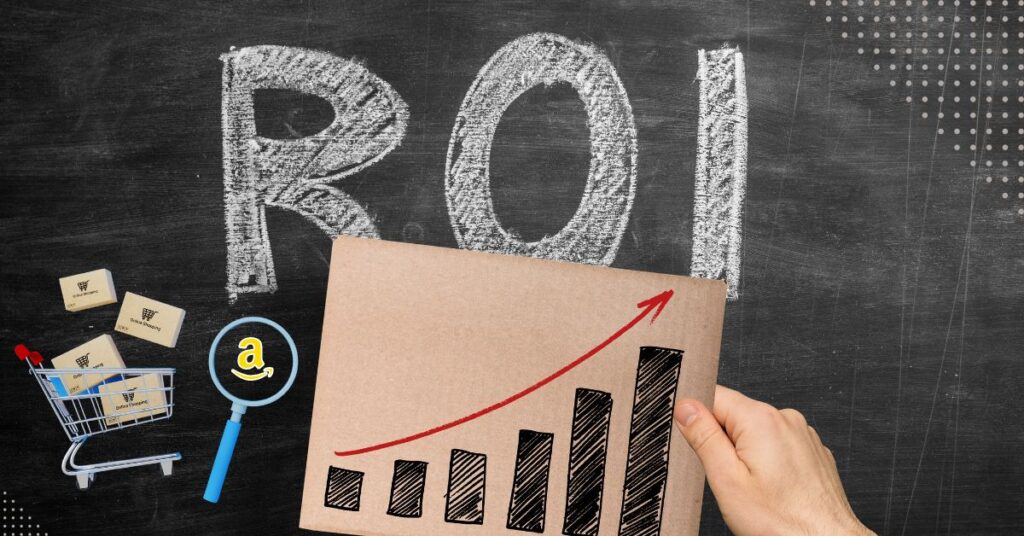In today’s competitive e-commerce landscape, Amazon sellers are constantly seeking ways to boost their business growth and drive higher returns on investment. One of the key metrics that holds the key to success is Return on Advertising Spend (RoAS). In this comprehensive guide, we’ll delve into the significance of RoAS, its calculation, and how you can optimize it to skyrocket your business on Amazon.


Understanding RoAS and its Significance:
Definition of RoAS:
RoAS, or Return on Advertising Spend, is a metric that measures the effectiveness of your advertising campaigns by evaluating the revenue generated from each dollar spent on advertising. It provides a clear insight into how well your advertising investments are paying off in terms of sales.
Why RoAS Holds Paramount Importance for Amazon Sellers:
For Amazon sellers, RoAS serves as a compass that guides them toward profitable advertising strategies. It helps in assessing which campaigns are delivering the desired results and which ones may need optimization.
Advantages of Enhancing RoAS to Foster Business Expansion:
Optimizing RoAS not only enhances your advertising efficiency but also leads to better allocation of your budget. With improved RoAS, you can achieve higher profitability, reinvest in successful campaigns, and expand your product offerings.
Determining a Good Amazon RoAS:
Factors Influencing RoAS Benchmarks:
RoAS benchmarks vary across industries, product categories, and market conditions. Factors such as seasonality, competition, and consumer behavior play a significant role in establishing a realistic RoAS target.
Setting Realistic and Achievable RoAS Goals:
By analyzing historical data, industry trends, and market projections, you can set achievable RoAS goals. Striking the right balance between ambition and feasibility is key.
Calculating Amazon Advertising ROI:
Understanding Advertising Cost of Sales (ACoS):
ACoS represents the correlation between advertising expenditure and attributed sales. It provides a direct measure of how efficiently your advertising dollars are converting into sales revenue.
Steps to Calculate ACoS:
Calculating ACoS involves dividing total ad spend by attributed sales and multiplying by 100. This simple formula gives you a clear percentage that represents your advertising efficiency.
Evaluating and Enhancing ACoS to Improve RoAS Effectiveness:
By analyzing ACoS data over time, you can identify trends, spot inefficiencies, and make informed adjustments to your campaigns. Lowering ACoS often translates to a higher RoAS.
Common Mistakes in Calculating Amazon Advertising ROI:
Inaccurate Data Inputs:
Using incorrect or incomplete data can lead to misleading ACoS calculations and misguided decisions. Ensuring data accuracy is paramount.
Ignoring Indirect Costs:
Indirect costs, such as product returns or referral fees, can impact your overall profitability. Factoring these costs into your calculations provides a more accurate picture of your ROI.
Underestimating the Impact of Organic Sales:
Attributing all sales solely to advertising efforts overlooks the influence of organic sales. A comprehensive view acknowledges both organic and paid contributions.
Relying Solely on Last-Click Attribution:
Last-click attribution oversimplifies the customer journey. Embracing multi-touch attribution gives a more holistic understanding of how various touchpoints contribute to conversions.
Strategies to Improve Amazon Advertising ROI:
Target the Right Keywords:
Thorough keyword research ensures your ads reach the most relevant audience, increasing the likelihood of conversions.
Optimize Your Product Listings:
Well-optimized product listings improve click-through rates and conversion rates, directly impacting your RoAS.
Refine Your Targeting and Ad Placements:
Regularly assess and adjust your target audience and ad placements based on performance data to maximize efficiency.
Monitor and Adjust Bids:
Continuous bid monitoring and adjustment allow you to allocate budget where it matters most and avoid overspending on underperforming keywords.
Resources and Utilities for Computation of Amazon Advertising ROI:
Amazon’s Advertising Dashboard:
Amazon’s built-in tools provide insights into campaign performance, ACoS, and other key metrics.
Third-Party Analytics Platforms:
External platforms offer advanced analytics and reporting capabilities to gain deeper insights into your advertising efforts.
Data-Driven Decision-Making Tools:
Utilize data-driven tools to make informed decisions on bid management, budget allocation, and campaign optimization.
Industry Reports and Case Studies:
Staying updated with industry reports and real-world case studies helps you incorporate best practices and stay ahead of the curve.
Conclusion:
As an Amazon seller, understanding and optimizing your RoAS is essential for sustainable growth and profitability. By setting realistic goals, accurately calculating ACoS, avoiding common pitfalls, and implementing effective strategies, you can navigate the complex landscape of Amazon advertising and drive remarkable returns on your advertising investments. Remember, the path to success is guided by data, analysis, and continuous refinement.
For those eager to delve deeper into e-commerce insights, be sure to explore AfolksDigital’s blog at www.AfolksDigital.com



